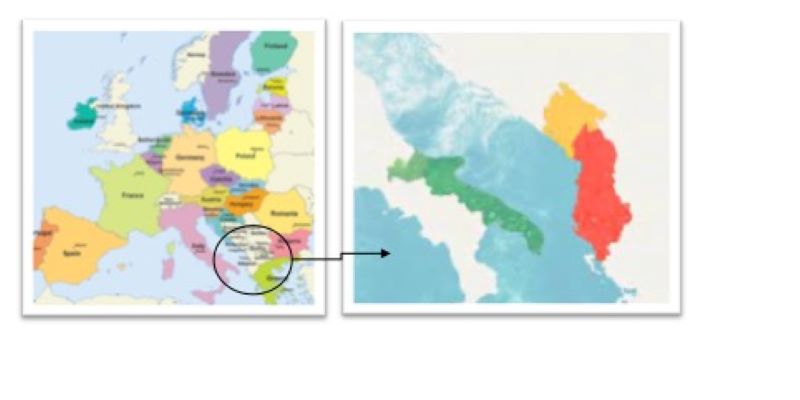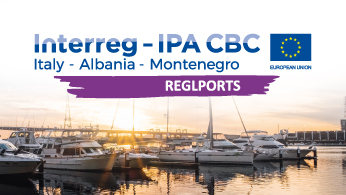
Paper presented in the conference "PUBLIC RECREATION AND LANDSCAPE PROTECTION – WITH SENSE HAND IN HAND!” ῎May 10-11 2021 organised by Czech Society of Landscape Engineers and Mendel University in Brno,Faculty of Forestry and Wood Technology
CONNECTING MARINAS WITH INLAND AREAS FOR ENHANCING THE PUBLIC RECREATION OF RURAL HERITAGES
Abstract The connection of touristic ports/marinas with the inland assets of the surrounding area through thematic itineraries, has as its objective the enhancement of heritage and the boosting of the area's image towards outside. As a whole, it is an informative structure of nodal points that represents places full of information, where tourists can discover new sensations, emotions and recreational activities that the area offers. A tourism offer integrated solution could be the basis for a further development of strategies and policies, focused on the implementation of a diversified tourism outcome. It can also trigger growth processes in a sustainable way, through the development of forms of slow tourism focused on the concepts of sustainability, responsibility and eco-compatibility, in the framework of landscape and heritage protection. This paper proposes an overview of some itineraries, reported in a tourism e-guide, which link the Regional Ports located in the south Adriatic Sea, to the hinterland, characterized by the presence of valuable environmental, natural and cultural resources. These areas have considerable potential to strengthen the territory on European and international markets, to deseasonalize the tourist offer and to create economic and employment opportunities.
Key words: Coastal Tourism, Thematic itineraries, Regional Ports, Tourism e-guide, Landscape protection, Heritage valorisation.
Introduction The Mediterranean area is characterized by extraordinary assets connected to its unique internal and coastal environments, with significant potential for tourism development [Statuto & Picuno, 2017]. However, this potential is not fully exploited, while tourist activities on coastal areas are mainly focused on a seasonal “sun, sea and sand” approach [Martins et al., 2020]. Nevertheless, there are alternative forms of tourism which could prolong the tourist season, tap new markets and overall provide the essential conditions for regional economic growth [Rochwulaningsih, et al., 2019; Picuno C.A. et al., 2017]. Nautical tourism (NT) is a tourism niche that combines the whole of marine recreation activities in destination shores and ports, by offering facilities and services for dry land tourists, cruisers and yachtsmen. In other words, all the on-shore and off-shore involving activities (Lam Gonzales et al. 2015) - comprising floating, submarine and land infrastructure (Lukovic 2007) with a strong marine component as defined by Lukovic, (Lukovic & Kizielewicz 2013) – is not only limited to the marine factors and equipment, but also involves the cultural conditions, land facilities and environment in the hosting marinas and hinterlands. NT, constitutes an industry of high added value with strong clientele growth tendencies in the Mediterranean Sea [Kizielewicz, 2012; Picuno C. et al., 2020]. Generally, NT is seasonal; however, if combined properly with other mild tourism activities, it may be prolonged with profound positive impact to local economies [Picuno P., 2016; Olišarová et al., 2018; Statuto et al., 2013]. Despite its high potential, nautical tourism is not sufficiently developed in Europe, and its connection with the assets of the hinterland is often insufficient and underestimated. In this paper, the results of the REGLPORTS Project, financed by the Interreg Italy-AlbaniaMontenegro Programme, are reported. The main objectives of this Project are to develop a common model for the smart and sustainable nautical tourism management through integrated development plans, the capitalization of inland’s natural and cultural assets aim to diversify tourism products and services, the preservation of environmental sustainability and the use of smart ICT tools that will substantially upgrade the existing tourism facilities and services.
Material and methods The focus area of the study regards the Italian Regions of Puglia and Molise and the entire territories of the countries Albania and Montenegro.The Coast of Puglia Region represents today the most important asset of the Apulian tourist offer, both in terms of attractiveness and in terms of access to the territory and connection to the touristic systems of the macro-region, representing one of the major points of strength of the Apulian economy in the perspective dictated by the Blue Economy. The Molise Region is scattered with small towns and picturesque villages, where you can discover the authentic folklore and ancestral traditions that still animate the region today. The Albania is a relatively new tourism destination. Tourism is a strategic sector and the country is trying to grow economically and compete with other countries in the region, having a profile with important resources especially in terms of maritime economy. In Montenegro the NT is one of the fastest growing tourism segments on the Montenegrin part of the Adriatic coast. All the data collected regarding the entire eligible area (Fig 1) were further used for the implementation of the other tools of In order to improve tourism services and facilities offered, some targeted ICT tools have been developed including: a) the Informative Destination System (IDS); b) the i-Tourist Guide; c) the webGIS system.The implementation of these applications was based on the adoption of the Rational Unified Process (figure 2) in which software development, is divided into four phases and nine core process workflows that define who, what, when and how development will take place. Specifically, the processes are: Inception: determination of the idea structure and needs of the project, Elaboration: evaluation and analysis of the requirements and the necessary architecture of the system Construction: Coding, implementation and testing of the application Transition: Releasing the software to the public. Adjustments and/or updates are made based on feedback from the end users.
Results As mentioned above, the results were the implementation of IT tools able to improve tourism services and facilities: These tools are: The Informative Destination System (IDS). It includes ports’ info about construction features, structures, local weather parameters, weather forecast and alerts (figures 3). The system also foresees the access to the online docking system, with Information about on available and reservation of mooring positions and a mooring cost calculation tool The i-Tourist Guide is a smart, stand-alone mobile application, in iOS and Android versions. It indicates the preferences regarding: the place of departure and the final destination, the available time, services required, availability of disabled access, category preferences for thematic routes etc. The system compares them with the information stored in its geodatabase and provides the user with the ideal routes to travel according to the preferences entered, from REGLPORTS marinas to more inland locations.
The WEB GIS is a user-friendly application which can be used both on smartphone and PC/Mac browsers. The application meets the requirements of security, interface and functionality on multiple platforms and can be used on computers and mobile devices (smartphones, tablets), using responsive design. The system is able to manage, analyze and present spatial and geographical data, while the user is assisted in its use, by information that is displayed on his screen.
Discussion The IT tools implemented have as goal of enhancing smart and sustainable tourism management in the intervention area, through the development of NT and its connection with the mainland. Together with the foreseen development plan it will constitute a holistic framework for tourism development in the entire intervention area. All the Project’s main results including the studies, models, tools (IDS, web-based GIS) and applications, could be easily adopted and capitalized on by the local/regional/national stakeholders and public authorities, during and after the end of the Project.
Conclusion In general, IT solutions play an important role in overcoming the different travel constraints that people face when planning and carrying out a tourist trip. The IT Tools that have been proposed, through their interconnectivity and integration, would constitute an innovative approach in tourism industry, which cannot be successfully tackled by individual national strategies. However, there is a need to further develop of tourist ports and support for shipbuilding as a driving force for pleasure tourism, for nautical charter, for the nautical industry, for the seafaring crafts and sports activities, which can in turn significantly improve the positioning of these territories, hence contributing to a further valorisation of the nautical tourism and public recreation of internal landscapes as well.
References Kizielewicz, J. (2012). Theoretical considerations on understanding of the phenomenon of maritime tourism in Poland and the World. Maritime University of Szczecin – Scientific Journals, 31 (103): pp. 108-116. Martins, F., Pedrosa, A., Ferreira da Silva, M., Fidélis, T., Antunes, M. Roebeling, P. (2020). Promoting tourism businesses for “Salgado de Aveiro” rehabilitation. Journal of Outdoor Recreation and Tourism, 29, March 2020, n. 100236 Olišarová, L., Cillis, G., Statuto D., Picuno P. (2018). Analysis of the impact of settlement patterns on landscape protection in two different European rural areas. In: Public Recreation and Landscape Protection - With Nature Hand in Hand? Conference Proceeding 2018. pp. 34–39. Picuno C., Godosi Z., Kuchta K. & Picuno P. (2019). Agrochemical plastic packaging waste decontamination for recycling: Pilot tests in Italy. Journal of Agricultural Engineering, 50(2), 99-104. https://doi.org/10.4081/jae.2019.958. Picuno C.A., Laković I., Roubis D., Picuno P., Capetanović A. (2017). Analysis of the characteristics of traditional rural constructions for animal corral in the Adriatic-Ionian area. Sustainability, 9, 1441. DOI: 10.3390/su9081441. Picuno P. (2016). Use of traditional material in farm building. Rochwulaningsih, Y., Sulistiyono, S.T., Masruroh, N.N., Maulany, N.N. (2019). Marine policy basis of Indonesia as a martime state: The importance of integrated economy. Marine Policy, Vol. 108, October 2019, n. 103602. Statuto D., Picuno P. (2017). Valorisation of vernacular farm buildings for the sustainable development of rural tourism in mountain areas of the Adriatic-Ionian macro-region. Journal of Agricultural Engineering, XLVIII (S1):643, pp. 21-26. Lukovic T (2007) Nautical tourism – definition and classification. Economic Review 58(11): 689-708. Lam Gonzales YE, Leon Gonzales CJ, Ledesma JDL (2015a) Highlights of consumption and satisfaction in nautical tourism. A comparative study of visitors to the Canary Islands and Morocco. Gestion y Ambiente 18(1): 129-145. ISSN 0124.177X. Kizielewicz J and Lukovic T (2013) The Phenomenon of the Marina Development to Support the European Model of Economic Development.The International Journal on Marine Navigation and Safety of Sea Transportation, 7(3), 461-466.
Acknowledgement The described work was carried out as part of the REGLPORTS project in the Framework of Interreg Italy-Albania-Montenegro Programme and co-funded by the EU through the Instrument for PreAccession Assistance (IPA II).
Contact Zoe Godosi E-mail z.godosi@gmail.com

